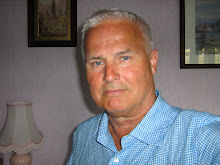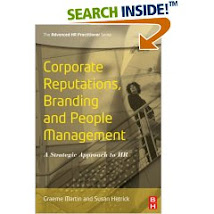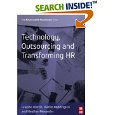I’ve had a (partly enforced) break over the holiday period (and beyond), due to some many writing deadlines, being overseas and being laid low for a few weeks (first time for me), so I'm likely to be a little ring rusty in the blogging sense. Anyway I would like to follow on with the post from November regarding engagement. In that post I was critical of the Macleod report’s discussion on the subject because it lacked the necessary rigour to make engagement a useful practitioner tool that would stand real scrutiny. Susan Hetrick and I first raised this issue of engagement in our 2006 book on corporate reputations and HR, suggesting it was little more than consultancy re-packaging of old ideas designed to refresh their HR product portfolio. Since then, I’ve come around to the idea of engagement, in part because it is so big in practice. So I’ve been working on developing a model of how leadership and high performance HR work systems influence different components of engagement to produce critical business and public sector outcomes. This model will be published in a forthcoming chapter on employer branding (with Saskia Dyke from Switzerland) and another in an article on leadership branding (with Julie Hodges from Durham). Susan and I will also be using it as the basis for a forthcoming financial services presentation.
Co-incidentally, two prominent HR academic colleagues of mine, Elaine Farndale from Tilburg and Paul Sparrow from Lancaster have been working on engagement, both of whom have made major contributions to the literature on the topic and have influenced my thinking significantly.
I’ve mentioned Paul’s work before and his Centre for Performance-led HR at Lancaster University. Along with Shashi Balain, he produced a really insightful contribution to the notion of engagement in a white paper. As part of that contribution, Paul and his colleagues have also made a series of short videos summarising their work. These are really worth looking at.
However, to my mind Elaine’s work on engagement with colleagues from Tilberg, represents a major breakthrough in bringing some rigour and evidence to the topic and anyone seriously interested in engagement should contact Elaine to get a hold of this paper by Bejier, Farndale and Van Veldhoven . For me , the most important contribution has been to define two different foci of engagement – work engagement, which I’ve already written about on this blog, and organizational engagement, which is what most consultants typically refer to as employee engagement. It also makes a key distinction between state engagement (attitudes and emotions which people hold to work and their organization) and behavioural engagement (actions that employees report taking to display engagement with their work and the organization). For example, many professionals are engaged in their work but not the organization, often to the point of over-engagement or burnout. Conversely, managers can become over-engaged (or over-identified) with the organization, which can lead to a form of collective blindness, intolerance of others who are not ‘organization men’ and a failure to privilege professional and moral values in decision-making. This is a topic that Elaine, Japp Paauwe and I hope to be discussing at a forthcoming symposium on HR’s contribution to corporate governance at the Academy of Management in August – the ‘darkside of engagement’ – something most of us can recognise but which has rarely featured in the practitioner literature..
Currently, we’re working on expanding the range of engagement foci – what people at work engage with – to show how they are distinct but related. For example, in healthcare and financial services, it is clear that people are engaged or can become disengaged with the industry, which is very important in explaining recruitment and retention. It is also clear that people can be more or less engaged with each other in the performance of their work, which is related to team-working and distributed leadership, both critical drivers of effective performance.
How to Answer an Open-Ended Question from a Job Candidate
-
Five strategies for interviewers.
17 hours ago





.jpg)

